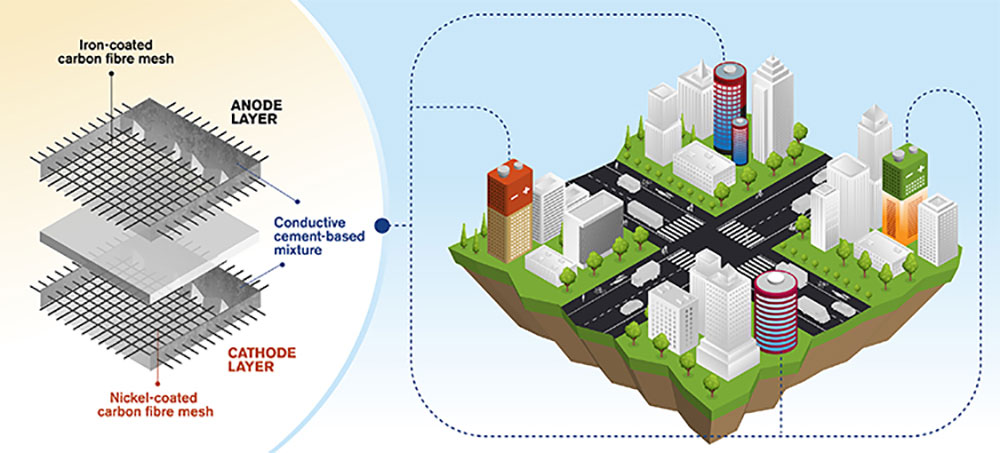Cement batteries could turn your apartment block into a giant power source

Pic: Getty.
Researchers recently published an article outlining a world-first concept for rechargeable batteries made of cement. This concept, which envisages using concrete structures and buildings as giant batteries, could be revolutionary.
The very early stage concept involves a cement-based mixture, with small amounts of short carbon fibres added to increase the conductivity and flexural toughness.
Embedded within the mixture is a metal-coated carbon fibre mesh – iron for the anode, and nickel for the cathode.

The research from Chalmers University of Technology in Sweden produced a rechargeable cement-based battery with an average energy density of 7 Watthours per square metre (or 0.8 Watthours per litre).
Energy density is low compared to commercial batteries, but this limitation could be overcome “thanks to the huge volume at which the battery could be constructed when used in buildings”, the researchers say.
“Results from earlier studies investigating concrete battery technology showed very low performance, so we realised we had to think out of the box, to come up with another way to produce the electrode,” researcher Emma Zhang says.
“This particular idea that we have developed – which is also rechargeable – has never been explored before. Now we have proof of concept at lab scale.”
Concrete is the world’s most commonly used building material. From a sustainability perspective, it is far from ideal, but the potential to add functionality to it could offer a new dimension, Zhang says.
“We have a vision that in the future this technology could allow for whole sections of multi-storey buildings made of functional concrete,” she says.
“Considering that any concrete surface could have a layer of this electrode embedded, we are talking about enormous volumes of functional concrete.”
UNLOCK INSIGHTS
Discover the untold stories of emerging ASX stocks.
Daily news and expert analysis, it's free to subscribe.
By proceeding, you confirm you understand that we handle personal information in accordance with our Privacy Policy.








